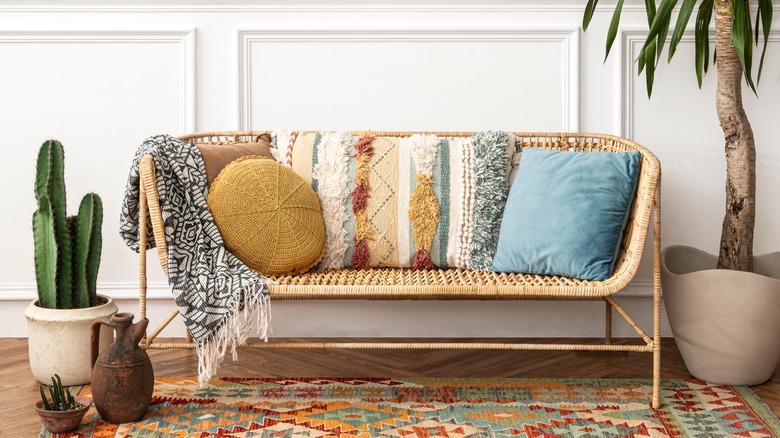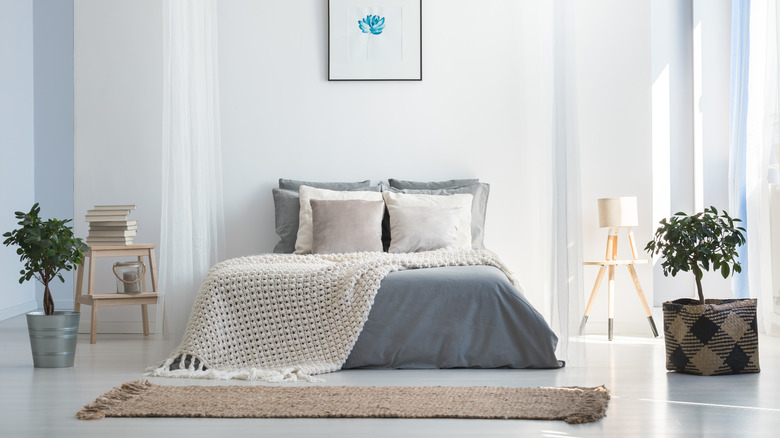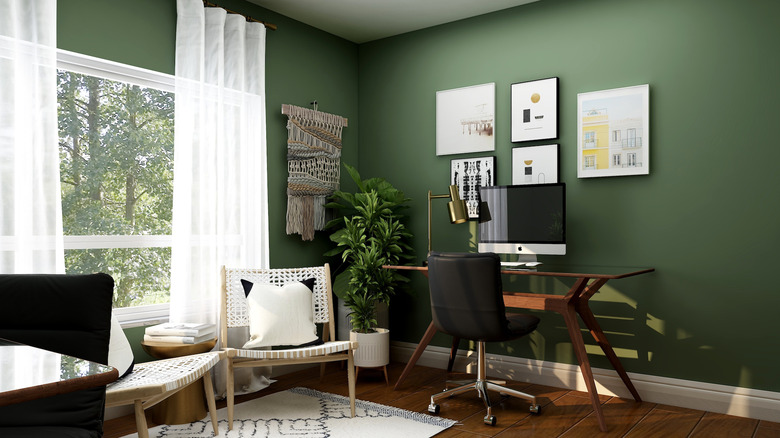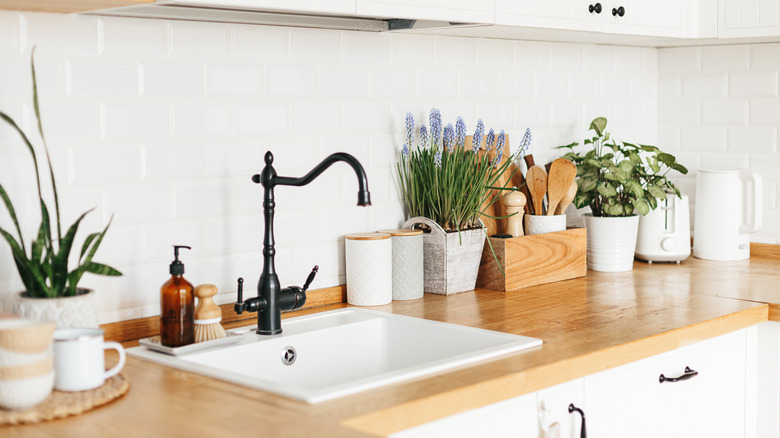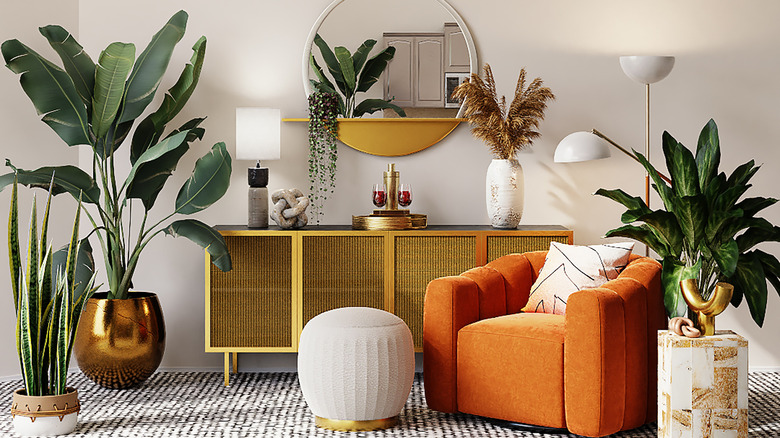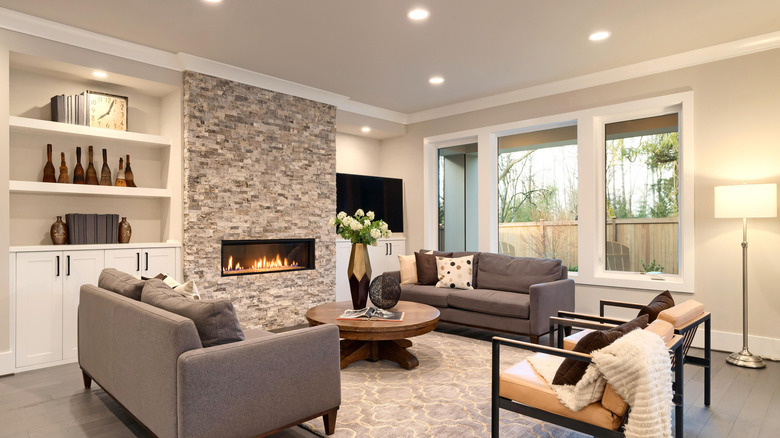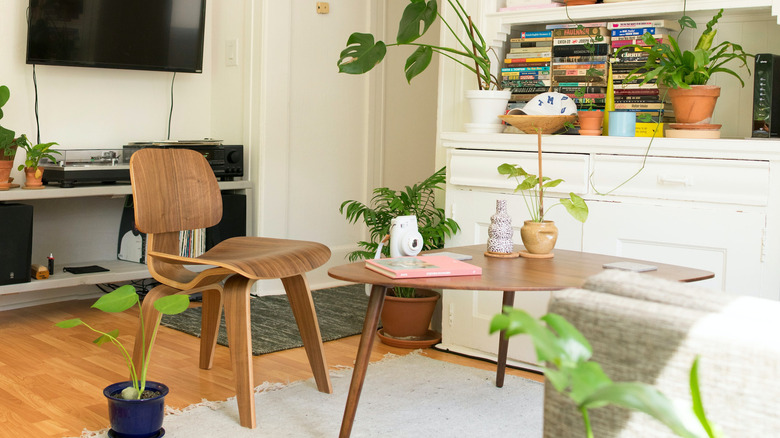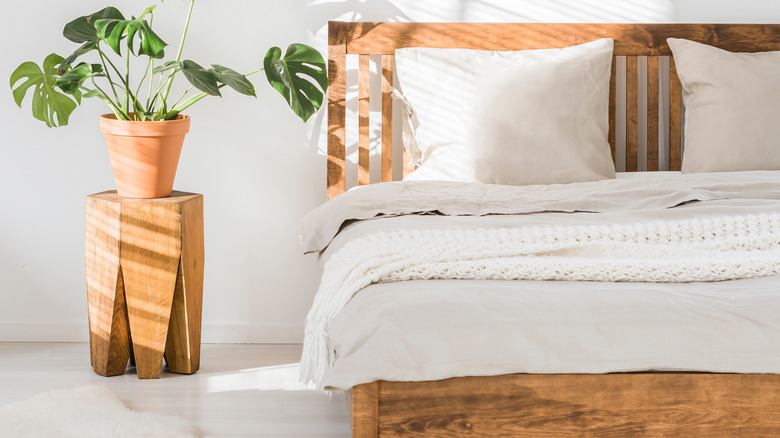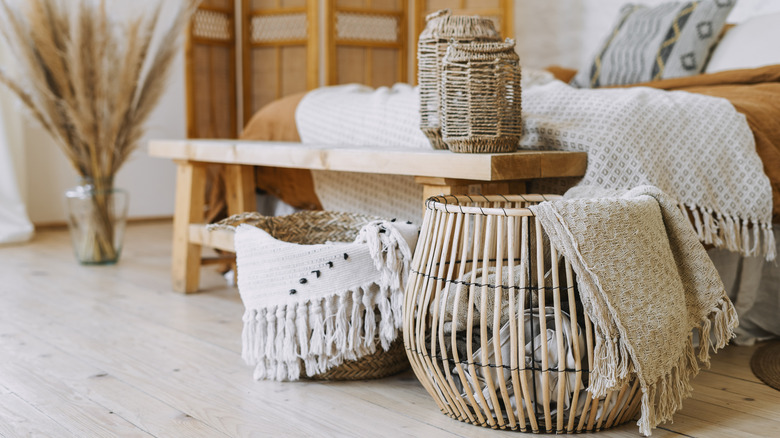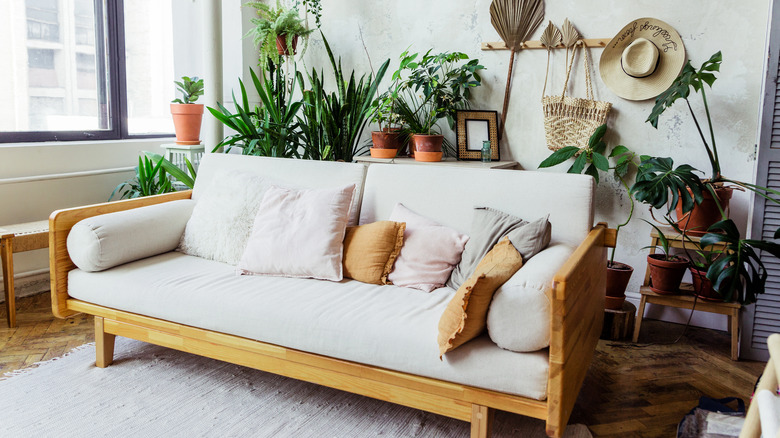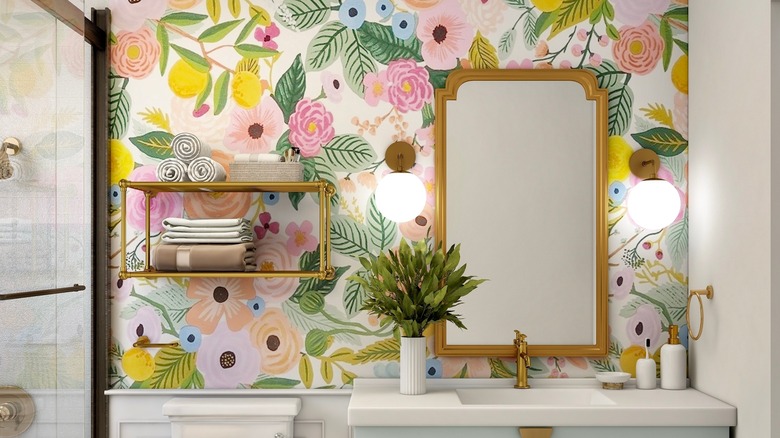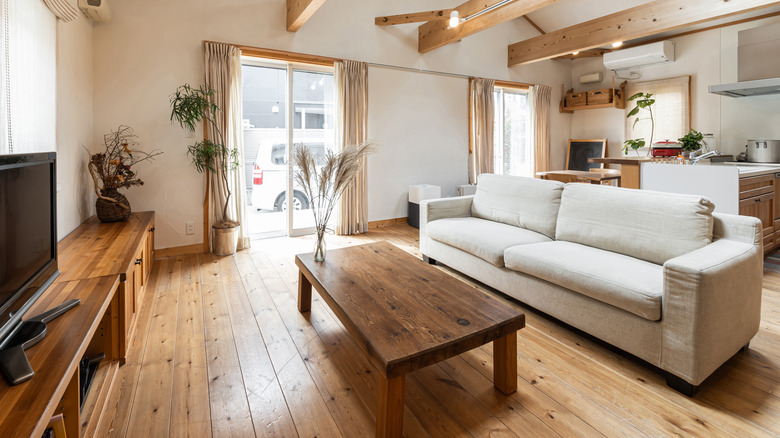The Ultimate Guide To Sustainable Interior Decor
We may receive a commission on purchases made from links.
Lately, there has been a shift in interior design consumption habits as more renters and homeowners are consciously choosing items and accessories with sustainability in mind. Curate your own interior like this by filling it with sustainable decor pieces that won't go out of style. What is sustainability in interior design? According to the GSA, it's a focus on the reduction of environmental impacts with objectives to sustain health for occupants and minimize waste. In other words, go for products that enhance your home environment without harming the natural one.
Build sustainability in your interior by decorating with items that save energy, use less water, and are crafted from resourceful materials inside and out. Limit the impact you have on the natural environment by filling your home with items that utilize organic features, natural fibers, and reliable production practices. Keep reading for inspiration on how you can embrace the decor trend that not only looks good, but feels good too.
Lay down brand new recycled rugs
While there may be stylistic reasons for whether or not you use a rug when decorating a room, if you find one you love, you can't go wrong. Set the foundation for sustainability with style in your home by choosing recycled rugs. Rug manufacturers like Rugs.com produce collections that are planet-friendly by crafting them using a method known as textile recycling. This method involves weaving fibers from reused materials — such as from donated clothes — to create rugs. What better way to be sustainable than by decorating your floor with a rug that was repurposed from something else?
Rugs are great because they add softness and structure to a space. Define a living room, dining room, or bedroom with natural rugs crafted from recycled cotton or plastic. You may think that these materials can't possibly supply the same softness as ordinary synthetic materials, but they certainly can! There are even plush rugs that are made from recycled fibers, such as this shag one available at Pottery Barn. Create essential texture in your interior by decorating the floor with sustainable rugs that can be beautiful and handle daily wear and tear.
Use window coverings that save energy
When it comes to windows, curtains, shades, and other window coverings are highly sustainable decorative elements to incorporate around your home. Window trimmings are fit for every room of the house, even those odd windows above the door or bathtub. Aside from the visual texture curtains and shades provide through their patterns, colors, and designs, they are also ideal for providing privacy and blocking light. According to the U.S. Department of Energy, about 30% of a home's heating energy escapes through windows. Covering the windows can reduce the loss of energy throughout an interior and help you create a more sustainable dwelling.
If you are looking for a window covering that doesn't sacrifice your interior style, but is still environmentally friendly, then consider bamboo window shades. Bamboo is a renewable resource that replenishes at a faster rate in comparison to other natural materials. Select Blinds explains that its natural composition makes it eco-friendly, as when disposed it will decompose quicker for less environmental impact. Responsibly update your windows with coverings that provide protection from outdoor elements and that are crafted with high quality materials.
Install faucets with proper flow rate
If you're looking to make eco-conscious changes in the interior of your home, consider the preservation of resources, specifically when it comes to water. Water is something that people use daily for all sorts of tasks, from getting ready to washing the dishes. The water that runs out of the faucet is consumable, but can be conserved. When decorating a home, conservation and consumption are probably the last two topics you have on your mind, yet they are both incredibly important.
Make your home more sustainable by swapping out the faucets with ones that meet the conservation standards with a maximum flow rate of 1.5 gallons per minute (GPM). The ordinary standard set by the Environmental Protection Agency is 2.2 GPM, as explained by the U.S. Department of Energy. Any faucet that has a GPM below the standard may be considered water-efficient. These include touch-free models like this one from Chicago Faucets, and others that have a low-flow aerator or metered faucets. With built in sensors, these faucets help save water in homes. Faucets engineered with this in mind will certainly increase your sustainability appeal indoors.
Decorate with greenery that benefits the air
Decorate the interior of your home with plants in a display that builds a welcoming and healthy place to live. Lush greenery around the home allows you to have beautiful shades of green year-round. There is really no way to go wrong when decorating with plants, as you just keep arranging and adding them until you're happy! You can group several together for a focal point or let a single plant capture the eye's attention.
Create a moment in your interior and bring the outdoors in. Consider adding some houseplants to your tables and corners for some natural accents indoors, including some plants that may even boast health benefits, such as purifying the air. "I usually recommend the golden pothos as my first choice, since it is a popular plant and easy to grow," Bill Wolverton, former NASA research scientist, told Time. Layer in any variety of plant you're comfortable with caring for. For larger plants, consider a potted fiddle leaf fig in a corner of the room or a snake plant nestled next to a table or chair. As explained by Healthline, there's more to the pointy leaves on a snake plant, as this species can filter indoor air and remove toxic pollutants. Use these organic, leafy plants to introduce a fresh vibe into your sustainable interior.
Control the lighting with dimmable functionality
From pendants to chandeliers, table to floor lamps, wall sconces, and other luminary fixtures, there are a variety of stylish light units suitable for brightening your space. While yes, brightening is what they are there to do, how bright they shine should be up to you. The intensity of light should change based on the room and the need for functionality. Replacing standard light bulbs with LED bulbs that produce less heat and last longer is surely a move on the path toward sustainability. But as for brightness customization — that's where light switches become a focus.
Control the lights in your space in ways more than just on and off. Focus your sustainable efforts on updating the light switches with dimmable controls. You can improve the switches and make them multi-functional and customizable. Traditional dimmer switches like these at Lowe's are perfect for adjusting the level of brightness from the room's wall switch. There are also smart WiFi-enabled light switches, like this one on Amazon, that allow you more detailed control and even let you set specific preferences. Swapping controls can be an energy-saving tool for your home, and can generate a more sustainable interior with just a flick of a switch.
Buy furniture that lasts
One of the most investment-worthy items in a house is furniture. Buying high quality furniture to decorate the interior will bring continuous positive visual impact for decades to come. "I think a home should tell a story, and that story is best told through pieces that last," Sybille Zimmermann told The Zoe Report. She continued, "For budget conscious clients, I always recommend to buy less and buy better which, to me, is at the center of sustainability." Good quality, well-built, properly-sourced furniture will never go out of style.
When it comes to materials, wood is considered one of the most environmentally-friendly as it is highly renewable, and therefore quite sustainable. The high replenishing rate makes wood-crafted furniture desirable for any interior, especially those with sustainability at the forefront of their design. Oak, mahogany, pine, maple, or bamboo are all wood types to consider for building a sustainably-furnished empire.
Swap the linens in the bedroom
Building a sustainable decorative design scheme in your interior is about incorporating earthy, natural elements in various rooms of the house — not just common places like the living room. Channel your focus on some sustainability in the bedroom. Perhaps it's about that time to change up the sheets on the bed. Whether you swap bed linens seasonally or just want a change, make your next set of sheets eco-friendly and cozy.
Choosing the right bed linens can be a daunting task, so make comfort and material top priorities. Sustainable sheets are available without sacrificing restfulness and style. Make your bed with eco-friendly bedding like this duvet set from West Elm, which has been tested for over 350 harmful substances, guaranteeing that the materials they use are non-toxic and safe for you to wrap yourself in at the end of the day. Material choices are one of many ways to incorporate living a more sustainable life. Organic cotton, hemp, flannel, or linen are ideal fabrics for sheets, blankets, or comforters.
Throw blankets that are naturally soft
Home is your sanctuary, therefore it should be filled with thoughtful items that keep you and your loved ones safe. Cozy throws and blankets are decorative elements that wrap you in a warm embrace when you need it most. They do double duty, as they provide cozy comfort and also decorate the place. The softness of blankets is one of its main appeals, and it can be sourced naturally.
Curate your interior by decorating the space with throw blankets made from ethically-sourced materials, like organic cotton, that are free from additives that could be harmful. You can lay a blanket, like this cotton one from Coyuchi, at the foot of bed, across a sofa, or in a basket for later use. These cozy pieces introduce character into a static space and help unify a design with colors or patterns. Eco-friendly and breathable fabrics weaved together will spruce up your interior in an easy way that maintains comfort and combines functionality with sustainability.
Create a glow with beeswax candles
Beeswax is an organic, renewable resource that naturally smells wonderful. What does that have to do with an interior? Well if you love candles, it might matter more than you think. Candles crafted of beeswax boast benefits both lit and unlit. The neutral color blends with any interior style, and when burning, they're easy on the environment too. These natural candles do not emit toxic smoke or soot into the air. According to The Home Intent, beeswax candles actually improve air quality by emitting ions that bind to toxins, leading to cleaner air.
Not only are they pure and void of artificial accents, but beeswax candles burn slower compared to traditional ones since they have a higher melting point of 149 degrees Fahrenheit. The Beeswax Co. explains that their dense consistency also lends longer burn times. Candles that last longer and clean the air in the home? Yes, please! Decorate with beeswax candles to capture a low ambient glow in a sustainable way.
Opt for consciously-collected cushions
Home decor is often an extension of your own self interests and as such should be reflective in the interior. If environmentally-conscious materials are important to you, then let that be known to your visitors by way of the accessories in your home. After all, what you decorate with should tell a little about who you are. For those building a sustainable interior, personality is not sacrificed when choosing decorative accessories like throw pillows, as there are a variety of patterns and styles that not only fit your vibe inside, but also leave little impact on the environment outside.
Consider decorating your space with handcrafted throw pillows like this one from The Citizenry, which is made in a Fairtrade environment. According to Fairtrade Interntional, that means it's a place where standards prevent unsafe practices when manufacturing goods. Craftsmanship and the renewability of materials is important on a global level as the source of items is often what makes it sustainable. When choosing throw pillows for your bed or sofa, cushions and pillow coverings made of organic cotton, wool, or buckwheat are eco-friendly options, rather than conventional materials like polyester. Create a welcoming atmosphere by decorating with throw pillows that elevate your space in a way you can feel really good about.
Decorate with chemical-free wallpaper
Wallpaper is a decorating tool designers use to instantly add depth to any interior space or piece of furniture. It's a highly versatile, visually-stimulating decorative item. Before you begin shopping for your favorite pattern, consider sourcing wallpaper that's more sustainably made. For example, wallpaper free of harmful chemicals and recyclable materials.
When decorating the walls or items in your home, it's unlikely you are worried about the glue contents of a peel-and-stick wallpaper as much as you are about how the design looks in the dining room. The thing is, what's in that adhesive totally does matter as not all ingredients are ones you may want in your home. Spoonflower offers a variety of wallpapers that are free of formaldehydes, PVC, and are crafted using an eco-friendly manufacturing process. Eco-friendly options like these are typically made with higher quality or recycled paper, and aren't coated with any flame retardants. Decorate your space with wallpaper that considers the well-being of the environment and its inhabitants.
Go for efficiently-sourced upholstery
Not all portions of sustainable interior decor will be visible. There are pivotal elements of the interior that are crafted with sustainability in mind, but remain unseen amongst the decorations. That doesn't mean they aren't there, they're just less obvious. Concealed items like cushion filling and foam inserts give form and comfort to sofas and chairs. These seat fillings can be crafted with an emphasis on recycled materials. Crate & Barrel creates pieces that use less petroleum-based foam with additional focus on utilizing more corn and soy-based components. You can be environmentally conscious in your own home by filling your dwelling with sofas, chairs, loveseats, or dining room chairs that are made of fillers and fabrics ethically-sourced with the preservation of the planet in mind.
The main goal of decorating a sustainable home is to fill it with decor that is purposeful and crafted with environmentally-safe practices. When decorating with sustainability in mind, one should source naturally crafted furniture, organic linens, plants, fixtures, and recycled rugs to fill their space. Interior elements that minimize impact on the environment, but maximize comfort at home, create a space that is healthy for the planet, you, and your guests. Use these inspirations in your home to manifest an interior decor fit for sustainability.
